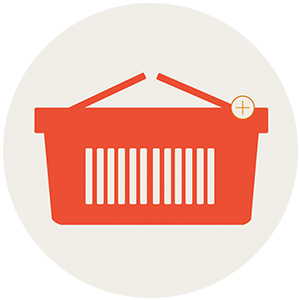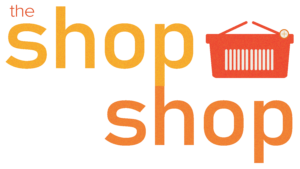If you just created a Shopify eStore, it can feel like you have a million things on your to-do list. This article tells you how to start promoting your Shopify eStore after you launch it.
Who Are You?
In this scenario, you are just starting with a Shopify store. Maybe you are an artist or maker. Perhaps you dream of owning a brick-and-mortar store one day. You might be working another job to support yourself while the store gets off the ground — and you don’t want to take out a loan to build this business.
You Started a Shopify eStore. Now What?
Let’s assume your eStore is connected to all the necessary apps, and perfectly functional. But, you aren’t getting any sales. Unless you already had a customer base before launching your Shopify site, this is the reality for most business owners. The platform is not like Etsy (or similar marketplaces) where you’ll get traffic from the platform. Rather, you have to drive your traffic to your storefront on Shopify.
In this situation, we encourage our clients to pick one product to focus on for their marketing. Why? It’s the simplest way to think about your marketing activities vs. your ROI. Also, it allows you to do a great job promoting without spreading yourself too thinly.
In this article, we’ll call that your focus product.
The First 5 Things to Do
There are a million things you can do for your store — especially on Shopify. So many apps, tools, and ideas are available. But, your strategy is what will help you sell more on your site.
1. Perfect the product page of your focus product
This is something you should do before day one — meaning as soon as possible. The product page for your focus product should be perfect.
- Have the best images possible and put the most useful one first. Think like a customer and make it super-obvious of what the item is and what it does.
- Use a product title that is clear. If the name of your product is something branded, make sure you use descriptive words after the actual name to explain what it actually is.
- Write a strong short description and make sure it appears right near the price.
- Write a long description that talks more about the product’s background. Explain why you sell it, and how they can use it. List all of the features, ingredients, or details. Explain why the information matters.
- Add definitions for any uncommon or commonly misunderstood terms.
- Price the product with wiggle room for a future offer. If you price it as low as possible, you’ll lose money on your offer.
2. Create an offer for it
This can be a discount if they sign up for emails (our favorite because it builds your list). You can also try free shipping or a gift with a purchase. Make the deal something evergreen — meaning that you can use it for a long time.
3. Add your focus product and offer to the top of your homepage
Essentially, it should be the first thing people see when customers visit your homepage.
4. Add that focus offer to your checkout and add-to-cart offers
There are many ways to do this in Shopify, with and without special tools. Just make sure it’s prominent to encourage checkouts.
5. Add that focus offer to your automated emails and pop-ups
Most people have their checkout and add-to-cart automations set up already in Shopify. Make sure this offer is part of that abandoned cart and abandoned checkout emails. Also, if you’re using alerts or pop-ups, this should be the offer for that area.
6. Create your ad accounts and set up your retargeting audiences
Whatever platforms you plan to use for ads and social media, set up your ad account now. You want to make sure they’re connected to your website. Then, create the audiences for “website visitors” on each one. Essentially, this is a list of people the platform is tracking who have visited your site. You’ll be able to serve ads just to them — which is more cost-effective than choosing demographics or interests. People will find you organically. Then, you can serve them ads through paid channels.
Once this is done, you’re ready to start promoting that product.
The First Day
Create a video about your focus product. Shoot it in vertical and think about it like a tour of your product. Note all the features. Go slowly through each talking point and take pauses between. Take as long as you need to record it. Ideally, this will have your face in it. It’s just you, talking about this product and how great it is. Ensure you have great, consistent audio and lighting throughout it.
Then, take additional video of the product being used. These can be more styled and creative.
Next, chop that video footage into as many videos as you can (You can usually get 20 or more from something like this).
- Instagram Reels/Facebook Reels/TikTok Videos/Youtube Shorts/Pinterest Videos – Edit these in-app using your clips. Ideally, you’ll add captions to each. As you work on them, keep them in drafts, and don’t publish them.
- Facebook/Instagram Feed Videos – You can edit this outside of the app if you prefer as long as you’re careful with the captions. They can be longer in form.
- YouTube Videos – Aim to make this video longer and link it as one of your product images.
Once you’re done with all these videos, and have them in drafts, list out all your talking points again in a document. These will be the phrases you repeat over and over. This will take you about a day — sometimes more. But, in the end, you’ll have many videos ready to drop that highlight your focus product.
The First Week
Now that you have your focus product videos in drafts it’s time to work on your other content.
1. Plan your blog posts
That list of features from your videos should be divided into a list of blog posts with 1 point for each blog post. You should be able to map out a dozen or more blog posts based on this.
2. Build a bank of images
Take beautiful environmental and romance images of your product. You’ll want to have a bank of these ready for your content calendar.
3. Finalize your posting schedule
This is where it will start to get fun. You can plan out how you’re going to mix scheduled posts about your focus product with more authentic, spur-of-the-moment content. Essentially, this planning frees you up to be yourself on all your channels (blog posts, social media, email blasts) while also remembering to push the product. The ratios that tend to work are 3-to-1 or 5-to-1 — meaning 3-5 authentic posts for every 1 sales-focused post.
You’re probably seeing how long your sales-focused content can stretch when you do this. Obviously, you can also work on mentioning anything new you’ve added to your shop and highlighting other products. But, it also ensures you’re talking consistently about that one focus product — the one that is going to be your main money maker.
The First Month
Now that you have your content planned out (and some of it scheduled), you’re ready to get some user-generated content and reviews. This touches every channel from your website, blog posts, and email to your various social media accounts. The biggest tip? Stay on top of it to keep it timely. Turning it around fast is better than perfection.
1. Create your initial community
Ideally, you’ll work with family, friends, and real-world connections for your first reviewers. Once you have your list of people, offer to let them try your product for free in exchange for reviewing and posting about it.
While you can try connecting with influencers or cold-contacting people, those don’t work as well for small, new brands. Instead, focus on getting your product into the right hands and giving them an excellent experience.
2. Amplify that community
Make sure those reviews are showing up on the product page (social proof). Anytime someone posts about you, find ways to share it. Reposts are great. But, if you can copy them onto other channels, that’s even better.
3. Start scheduling your content
Since your product is already in use, now is the ideal time to start dropping your own content about the product. Your content will be going live at the same time as user-generated content. Blog posts can mention customer reviews. Your videos will show alongside customer videos. Create a synchronicity between what you’re saying and what your customers are saying.
That creates a lot of trust — just by timing your UGC content with your own.
The First Year
Although it will feel redundant and boring to you, you must focus on that one product for a full year. Online sales are saturated with so many products and voices. So, you will need time to become “known for” your product. The majority of your marketing tasks should revolve around this product for a full year. Otherwise, you won’t get any visibility.
During that time, you can build up your visibility.
1. Prepare Your Email List
Anyone who purchases through Shopify will be on your customer list. They’ll also be on your customer list if they convert on an offer. So, watch that list to see how it’s growing.
The available segments will show you how many people have signed up but never purchased — which can be a discouraging figure. But, it’s really an opportunity for you because you’ll hit them at the end of the first year.
2. Plan your first big markdown
While you’ve had an offer on your focus product for the first year, don’t run any sales. It will cheapen your brand and make people expect it. But, start thinking about what you will do for your first, big store-wide markdown. Make it a big one and plan it during a slow time to boost your cash flow.
This is where you’ll turn many of those never-purchased customers into first-time buyers.
3. Watch the trends for new angles
Even though you’re likely tired of talking about your focus product, keep at it by relating it to trends. This is a natural, easy way to create new content without feeling too salesy.
4. Plan your first paid ad campaign
Your first paid ad campaign should revolve around targeting people who have visited your site before. Remember that list from “before day one”. That list is probably sizable now. You can check on it and make sure the audience size is big enough to ensure ad delivery. (Each platform can estimate this for you in their tools).
Now, you can finish up your year with a big sale and an influx of cash. You’ll be in a great position to go into year 2 of your site and keep that momentum.
If You Liked This
If you enjoyed this article, subscribe to my twice-a-year newsletter. I talk about what’s going on with eStores, online sales, and visual trends. It’s a great way to stay inspired as you build your customer base. If you’re looking for more Shopify eStore inspiration, follow me on Pinterest. I regularly pin eStore designs and it’s a great place to get ideas for your own shop.
Understand Shopping Trends
We’re dropping our next newsletter in July 2025. Sign up for exclusive freebies, giveaways, and industry insights.


